The Article
Mediterraneo From Gold Note: A Walnut Trip
22nd August 2018
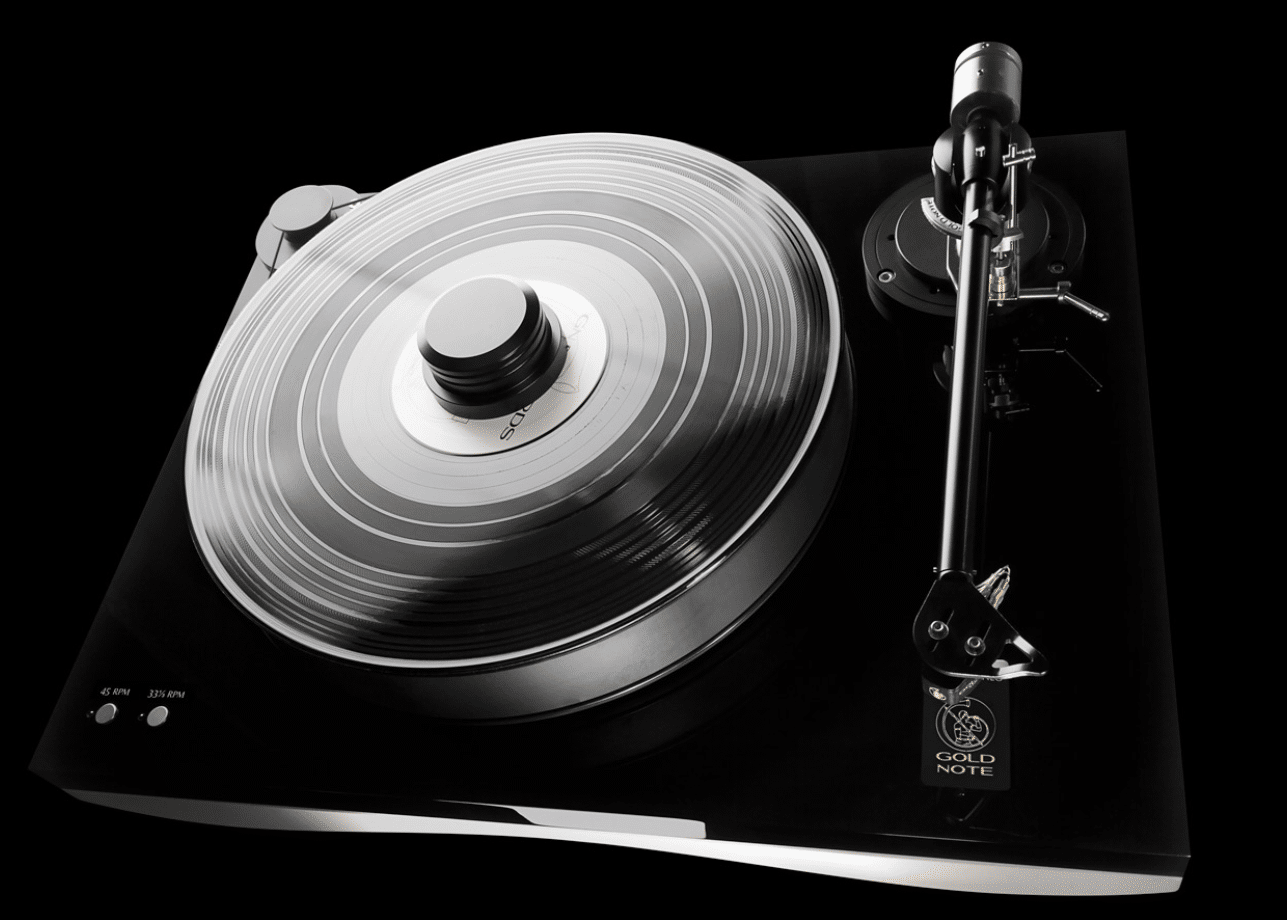
Offering an array of intriguing design elements and stylings, Paul Rigby reviews the Gold Note Mediterraneo
Designed and built in Italy, this two-speed, belt-driven Gold Note Mediterraneo is certainly the product of careful study. It betrays a considered and balanced brief that gives this deck, spanning 470 x 210 x 360mm and weighing in at a meaty 25kg, a unique look.
Quite a bit of the ‘look’ originates from the bottom upward. That is, from the hand-made, aged Walnut lower plinth. The 60mm curved plinth has been chosen for its “…exceptional elasticity, strength and high-density…” said the company. The wood is attached to a 20mm board made of polished acrylic which is reinforced with a 3mm stainless steel board.
I asked the company about the wooden plinth element and they admitted that there are pros and cons regarding it, “It is very difficult to work with and it takes an extremely talented and skilled craftsman to create unusual shapes, like the one we need. It is more difficult to find and more expensive,” said the company.
The upsides apparently outweigh the difficulties, “The Italian Walnut used on Mediterraneo offers some unique advantages when employed on this kind of source as it is extremely dense but highly dampening at the same time so when you feel the weight of the deck you know that it comes mostly form the lower plinth. Obviously there are other materials with high density but none can offer the same dampening effect. So basically it provides stability, insulation and rigidity to the turntable on its own.”
The shape of the wooden plinth was developed by Arch. Stefano Bonifazi after a thorough research on structural design. His research brought him to use the mathematics behind Catenary curves to solve two problems at once: giving the best support and insulation from the environment to the chassis while providing the rigidity and virtual mass of a much heavier object, “The Catenary curve of the wooden plinth has been generated by an algorithm that simulates pressure and it is in fact the very same curve discovered by Galileo and still used in engineering bridges (like the Ponte Santa Trinita in Firenze).”
POWER SUPPLY
The power supply is intriguing on this turntable because it features a simple switch mode block, plugged into the rear of the plinth. A direction I would associate with budget designs but not this high end model, “While the switching power supply may seem ‘under-sized’ for a turntable of this calibre,” said the company, “there are some very good reasons why we choose it. The power is completely coming from outside the turntable so there are no parts of the power supply placed inside it. The results achievable with a large linear power supply – like some other decks at this price point feature – could theoretically be better but we took a ‘smart’ approach. We started designing a frictionless, high-efficiency synchronous motor, then an effective decoupling mount for the motor and finally also developed the electronic controls to achieve the right amount of torque, power and stability. With such a refined motor delivering and controlling the speed even the switching power supply we are using at the moment is definitely ‘over-sized’ resulting in more than enough power to drive the turntable in optimal condition.”
Apparently, the small switch mode supply is six times more powerful than it needs to be. Rather than looking too hard at the power supply, Gold Note decided to focus more on the motor and associated electronics. Less power, more precision, you might say.
I also wondered why the speed selectors were placed on the central chassis and not isolated on a separate box to reduce possible veiling noise, “Because of the design philosophy explained above,” said the company, “We can afford to concentrate everything on the plinth thus requiring less volume (at the same time obtaining higher density) and simply move away the power supply from the deck. The motor is decoupled from the chassis through elastomer material, thus acting almost as a floating element. It is also calibrated differently for different turntables in order to perfectly match the materials used for the chassis.”
One of the most interesting parts of the design is the platter and bearing. The platter is made from a dense Sustarin polymer material which is, according to the company, ‘ultra dead’ or, as the manual has it, ‘ultra deaf’. Both terms sound pretty terrific to me.
The bearing includes a Tungsten 5mm ball bearing with adjustable brass seat in a polished bronze case,
You place the platter on top of the bearing, during installation and then the central spindle – a separate item known as a Split-Spindle – is speared through the centre of the platter and then screwed into the bearing beneath, “That allows the turntable to achieve higher precision and control over the rotation of the platter,” said the company. “It also increases the overall rigidity of the rotating system and ensures perfect alignment, an axis damping effect and it avoids oscillations. Like the choice of the wood, this long spindle/bearing system requires very precise processing of the metal parts.”
The rear of the turntable features the phono sockets which hold the supplied cables. These are fine to use but the company does offer higher quality cables for use if you require them.
Speaking of cables, the tonearm is connected via a small DIN plug, “The DIN connector we use is the German DIN standard and differs from the common – at least for the HiFi industry – SME model,” said the company. “We adopted the standard DIN as it is the ‘real’ DIN and in our opinion it sounds the best. We use only Hirschmann connectors made in Austria.”
A dust cover is included and easily removed using slide on/off hinge brackets.
The included 9” B-7 Ceramic tonearm features a moulded headshell including a built-in finger lift that is awkward to use and poorly designed for a secure finger position.
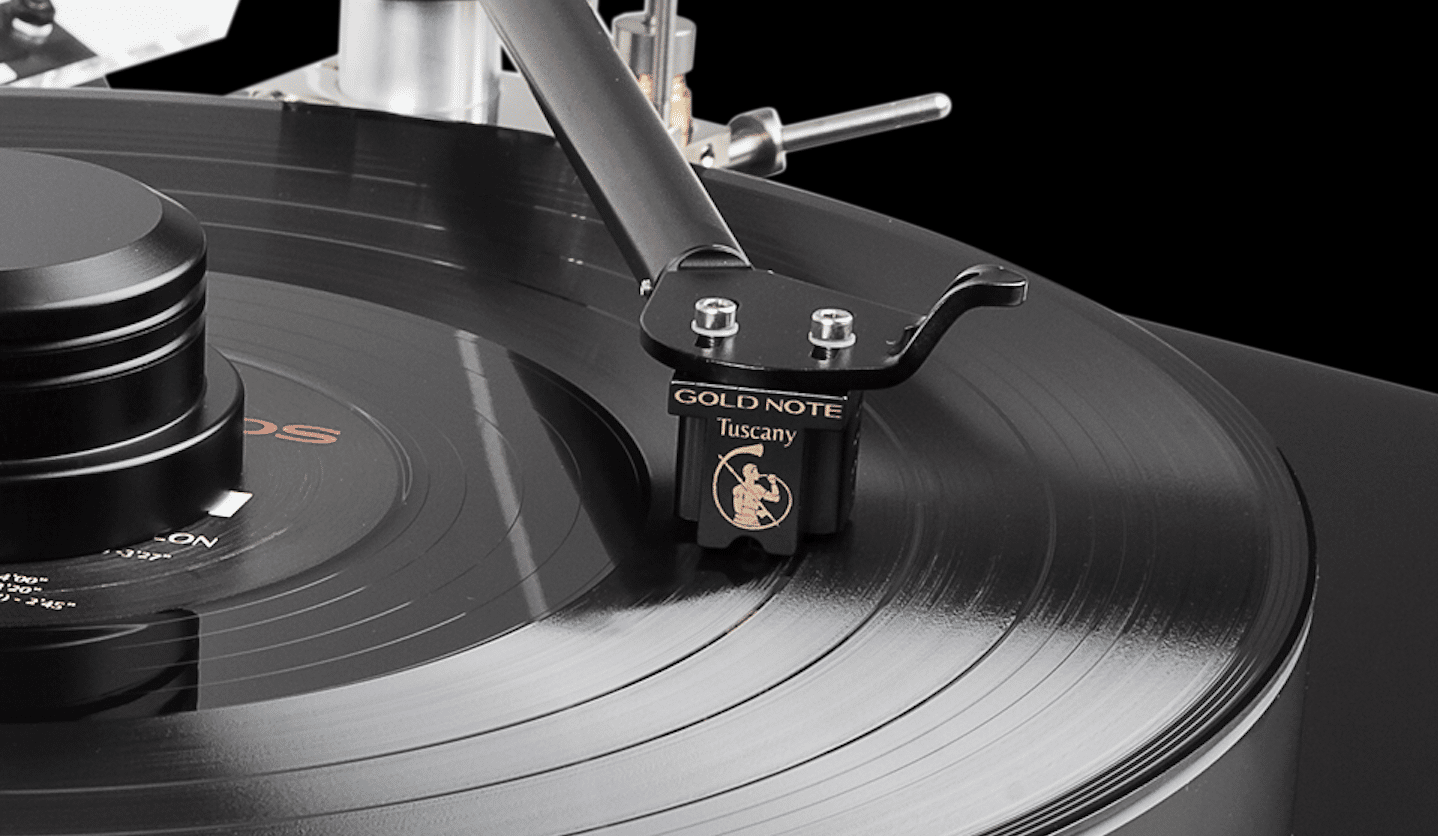
The tonearm also utilises four ball bearings, supplied by the German outfit, GRW. Including a 10g mass with adjustable azimuth and VTA and a wire-based anti-skate, the tube is titanium based while the internal wiring is AWG36 Hyper Litz shielded 99.9999% OFC. A stainless steel counterweight is included but different sized weights can be supplied if required.
SOUND QUALITY
I decided to add a Koetsu Black MC cartridge to the turntable and began the sound tests with David Bowie’s Low (1977) and the track Breaking Glass.
I was pleased to see that the turntable behaved properly with no unruly frequency behaviour. There was no brightness in the mids, no pinching treble or blurring bass here. Everything was in order which gave the design a good base to work from.
What really hit me upon hearing this track was the immense sense of focus across the soundstage. The bass was honed and never showed any excess fat which helped the pace of the music to skip along without any dragging. It also allowed the bass guitar to isolate itself from the stereo image, a position also occupied by the gated drums which smudged themselves (purposely, I might add) throughout the track but did threaten to veil the bass guitar. Not here and not with the Mediterraneo. The focus placed upon the bass guitar allowed it to insert a sliver of space between it and the drums, allowing the ear to follow it easily.
This facet also aided the double (well, triple) tracked lead vocal, which meant that the individual tracks could be isolated and followed. This extra precision also helped the ride cymbal (left channel) and lead guitar (right channel), giving them room to manoeuvre but also aided the ride cymbal to offer its signature ‘whooshy’ sound (blinding you with science now, eh?). Any sense of midrange smear veils this delicate effect but the Mediterraneo handled this element with ease.
There was a drone sound from the rhythm guitar which tried to sit, unnoticed, at the rear of the soundstage. The Mediterraneo offered enough insight to track this shy guitar but also allowed the ear to hear the constant mini-strums required to keep the drone-like noise going.
I then shook up the musical genres and turned to vocal jazz and Eydie Gorme’s original pressing of All My Heart and the track, Don’t Worry ‘Bout Me.
It was at this point that I addressed the included Gold Note stabiliser that arrived with the turntable, fitting loosely over the centre spindle.
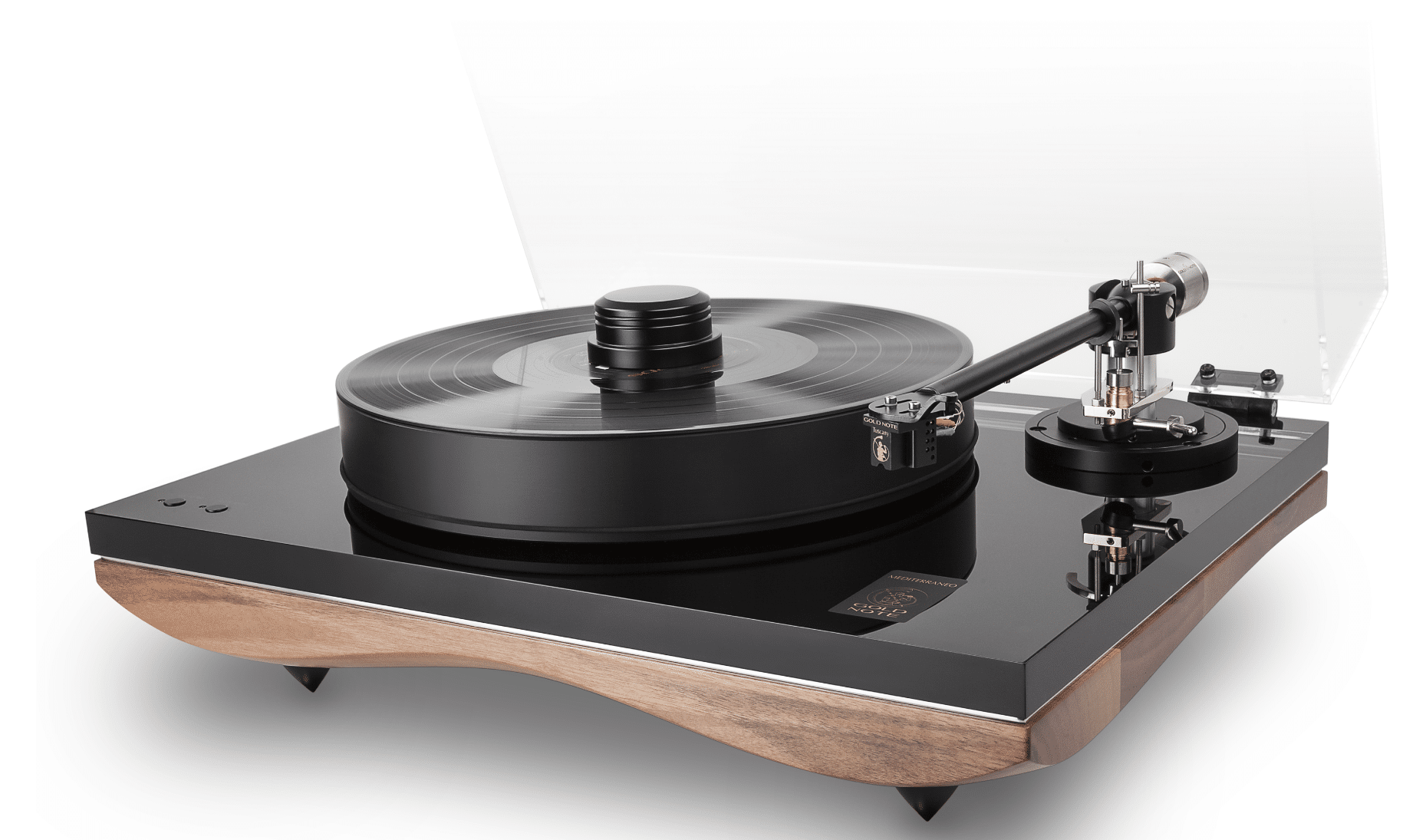
In use, it damped the sound and provided an extra level of control but it also killed dynamic extension, rolling off the upper mids and treble a touch and losing an element of excitement. As a choice? I preferred listening with the stabiliser off. Far superior was bringing in a third party stabiliser such as HRS ADL which retained the extension but enhanced the soundstage, giving the stereo image a 3D-like push backwards. Even better than that was HRS’ heavier stabiliser, the ADH which added a sense of grandeur to the music, adding space, air and instrumental separation while boosting bass power and reverb tails on the ride cymbals.
In general terms, Gorme’s vocal was full of breathy emotion and dramatic crescendos whilst remaining beautifully clear and sweeping in terms of the bed of good old fashioned ‘echo’ that it sat upon. The strings, meanwhile, were lean, fast paced but also sweeping in their approach, like a flock of birds flying from one end of the soundstage to the other.
The bass guitar was shy on this track yet this low key frequency was tracked well by the turntable while the brass section was full of texture and detail.
CONCLUSION
Able to provide crisp detail without sounding bright and an attention-demanding focus without sounding compressed, the Mediterraneo sounds mature in its sonic approach. It also successfully promotes confidence because this turntable always sounds in control of the sonic situation. The Mediatarraneo is both stylish but also a little quirky in its design focus. I see this point as a positive slant to the deck because it helps to remove the turntable from the ‘me too’ pack in terms of design direction.
As such, Gold Note has taken an aesthetic approach that will appeal to many traditionalists in terms of its style and form, will catch the eye of those looking for a sense of the inimitable but will please both groups in terms of its sonic abilities.
GOLD NOTE MEDITERRANEO TURNTABLE
Prices:
Mediterraneo Walnut with B-7 Ceramic tonearm = €6,610
B-7 Ceramic tonearm = €1,550
Other models available:
Mediterraneo Walnut with B-5.1tonearm = €5,850
Mediterraneo Black with B-7 Ceramic tonearm = €5,710
Mediterraneo Black with B-5.1tonearm = €4,950
Tel: 01420 544140
Website: www.goldnote.it & www.audiopinnacle.co.uk
GOOD: soundstage focus, midrange detail, bass precision, quirky style, solid build
BAD: stabiliser, tonearm finger lift
RATING: 8
[Don’t forget to check out my Facebook Group, The Audiophile Man: Hi-Fi & Music here: www.facebook.com/groups/theaudiophileman for exclusive postings, exclusive editorial and more!]
REFERENCE
Origin Live Sovereign turntable
Origin Live Enterprise 12″ arm
Van Den Hul Crimson XGW Stradivarius Cartridge
Icon PS3 phono amplifier
Aesthetix Calypso pre-amp
Icon Audio MB845 Mk.II monoblock amplifiers
Quad ESL-57 speakers with One Thing upgrade
Vertex AQ, Gekko & Tellurium Q cable
Blue Horizon Professional Rack System
Harmonic Resolution Systems Noise Reduction Components
All vinyl was cleaned using an Audio Desk’s Ultrasonic Pro Vinyl Cleaner

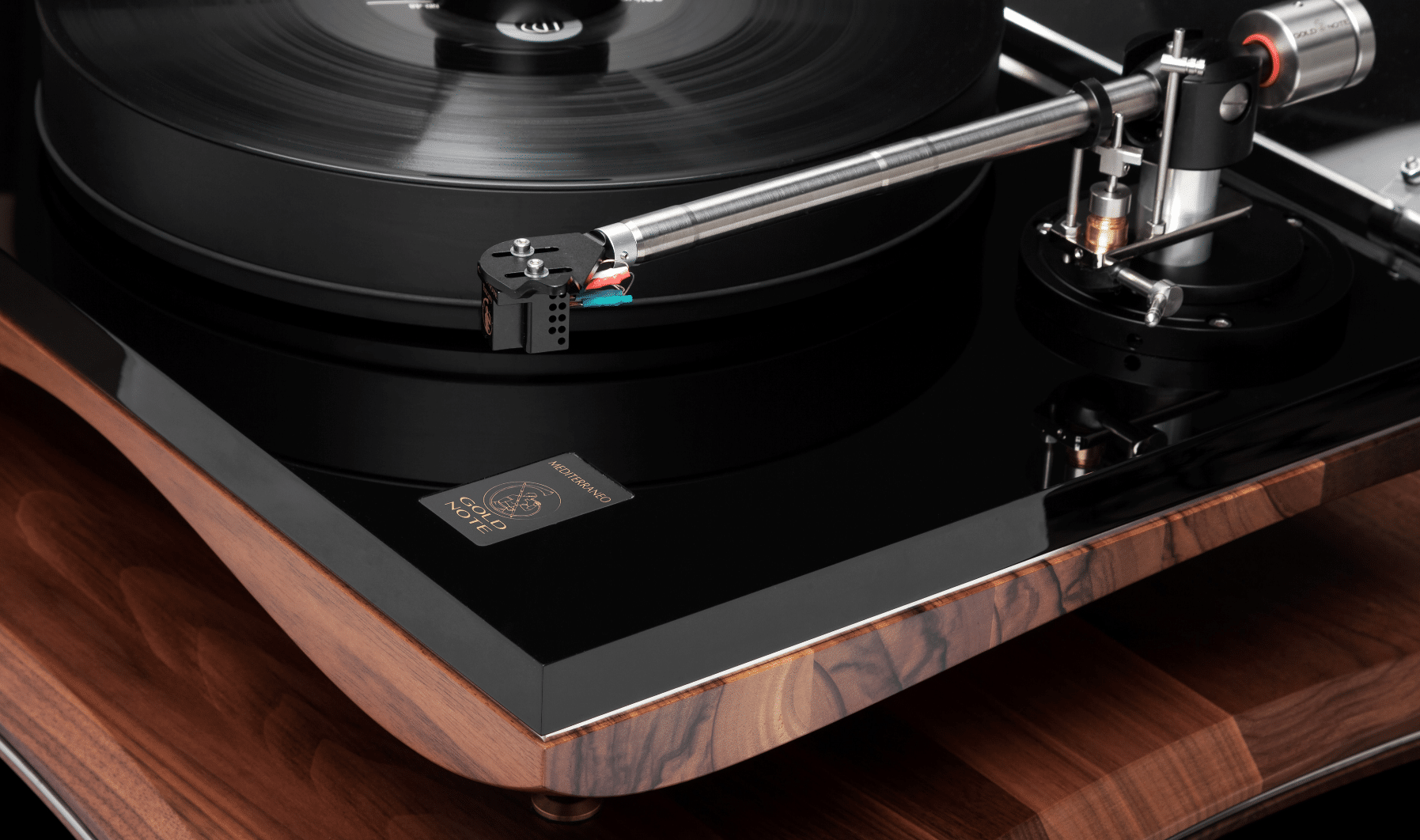
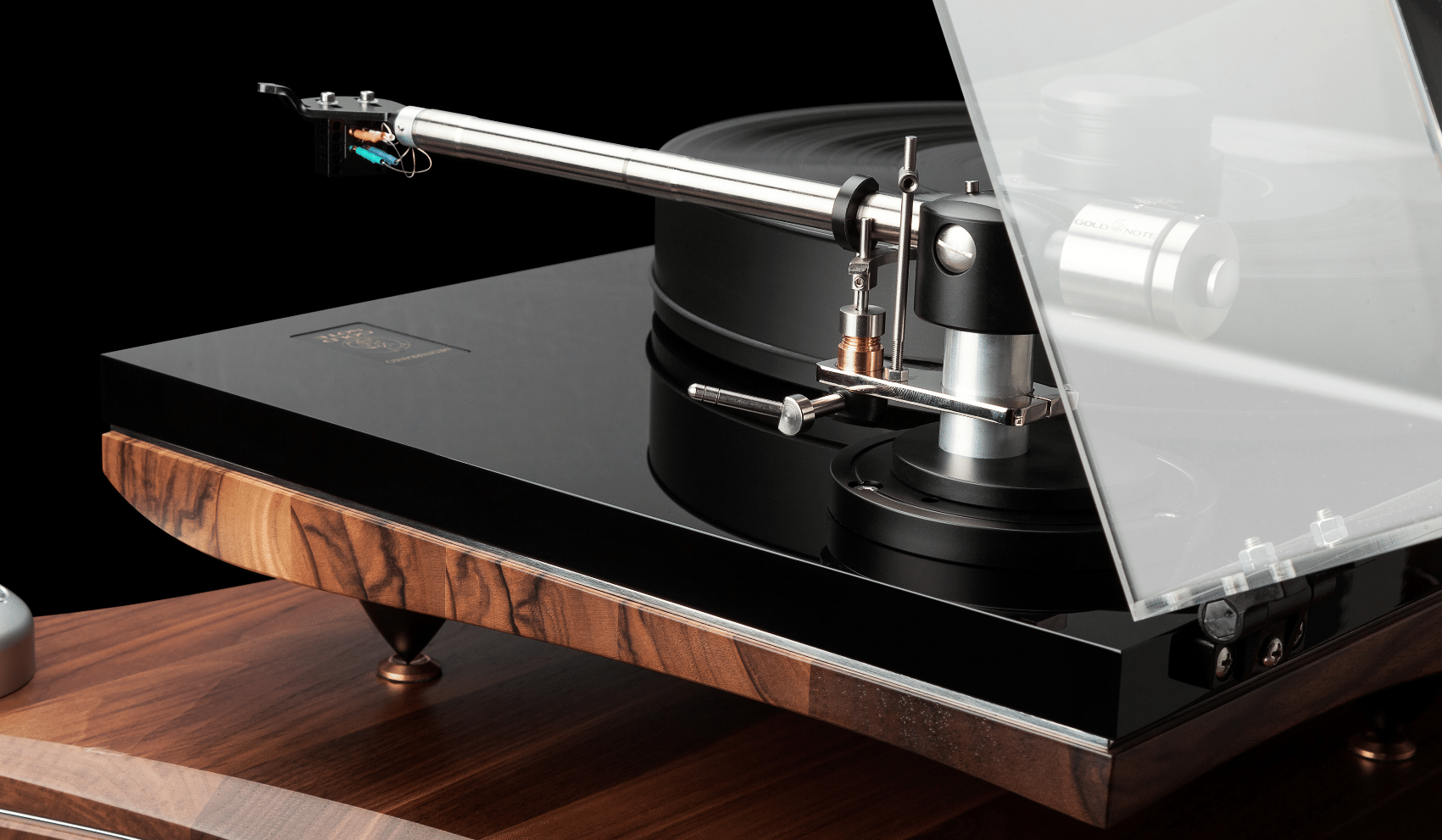
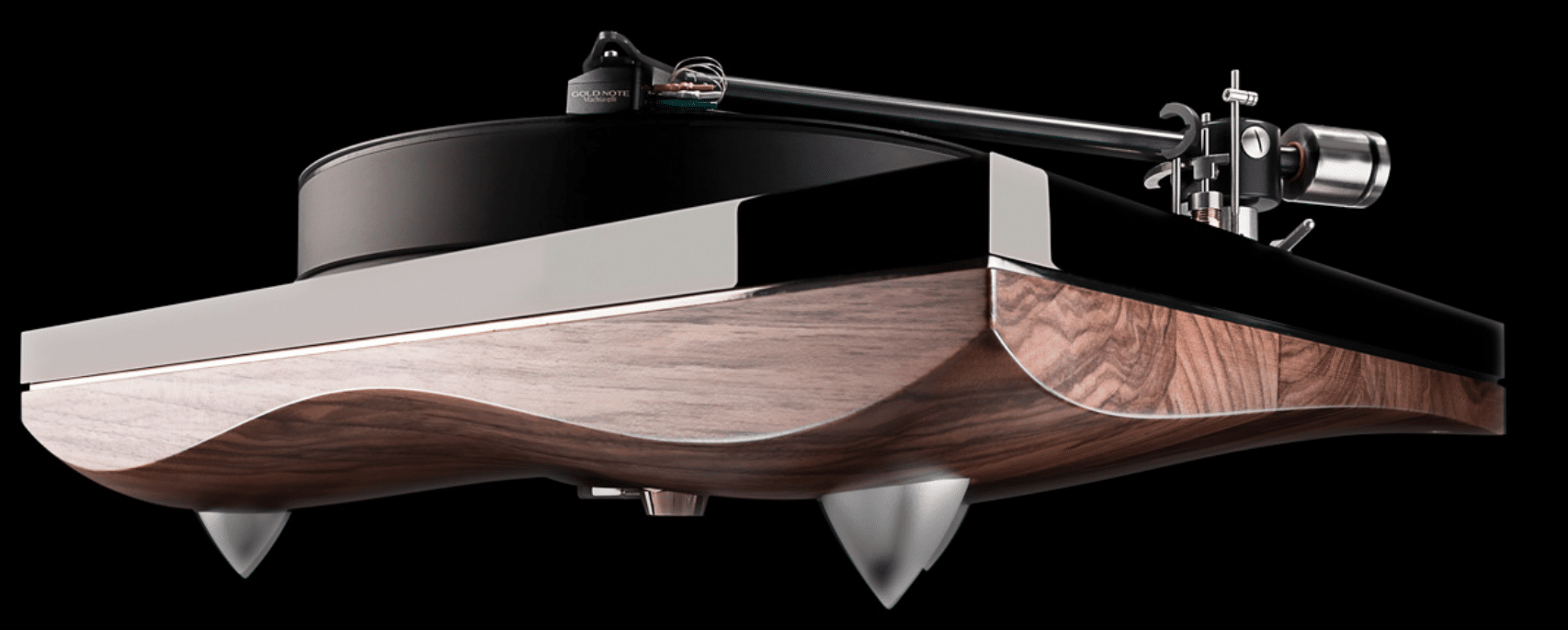
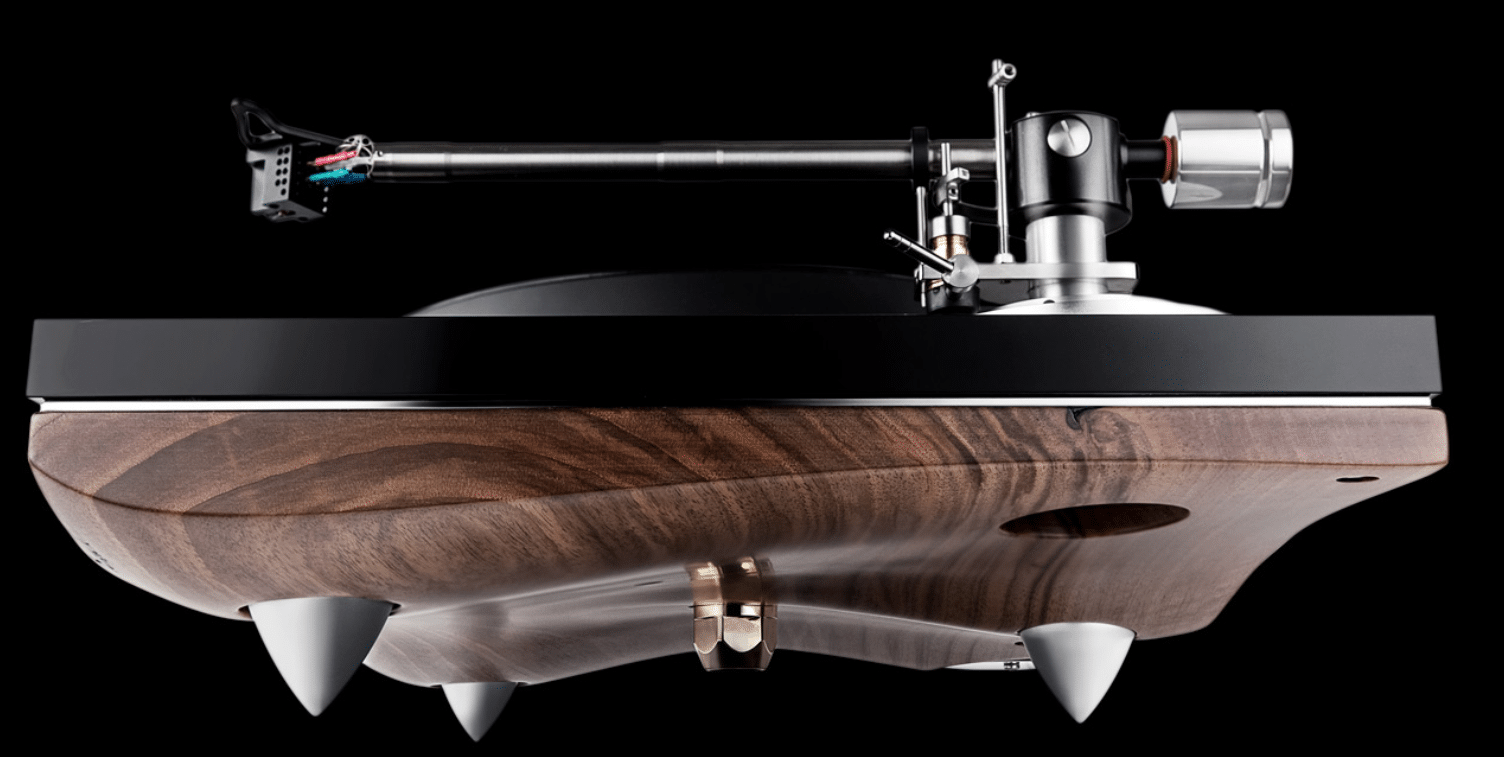
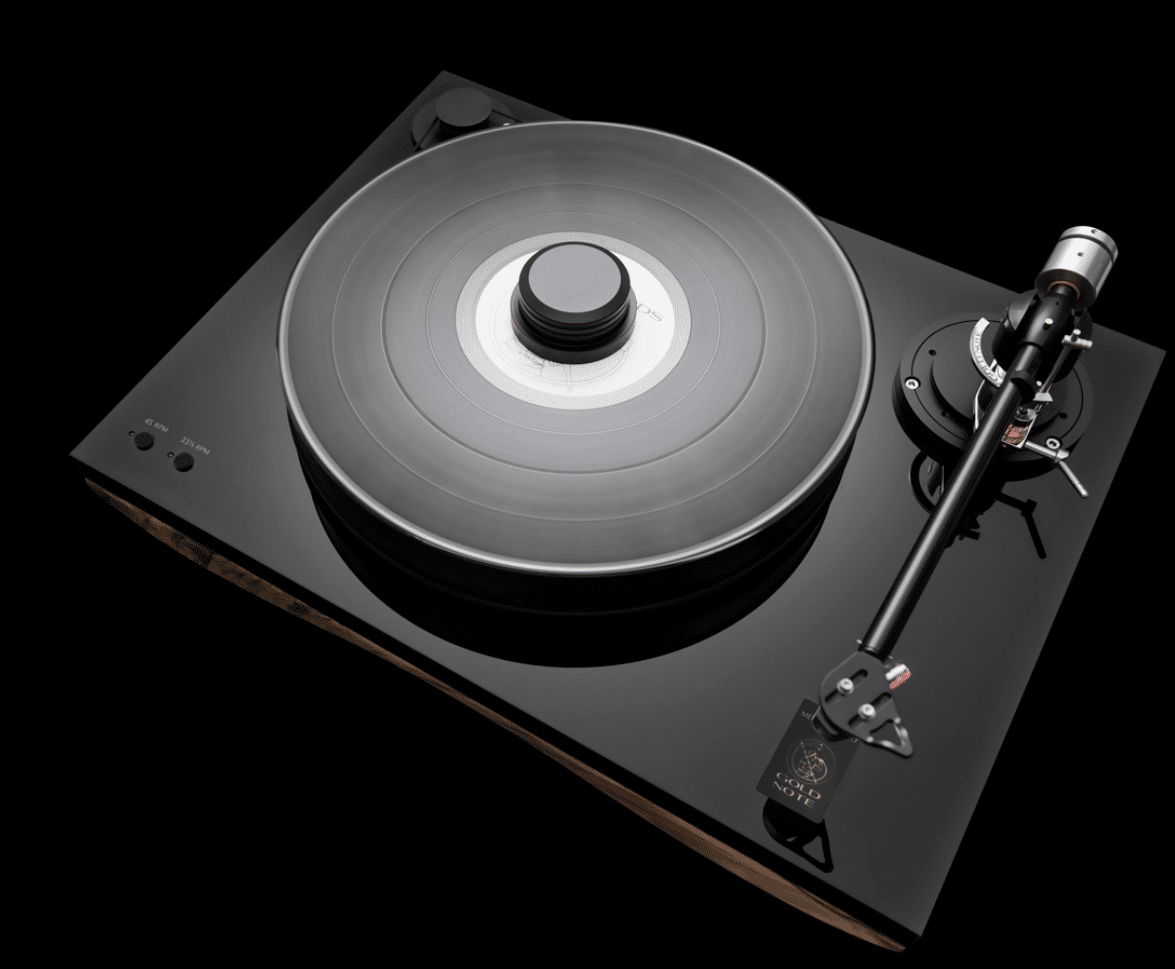
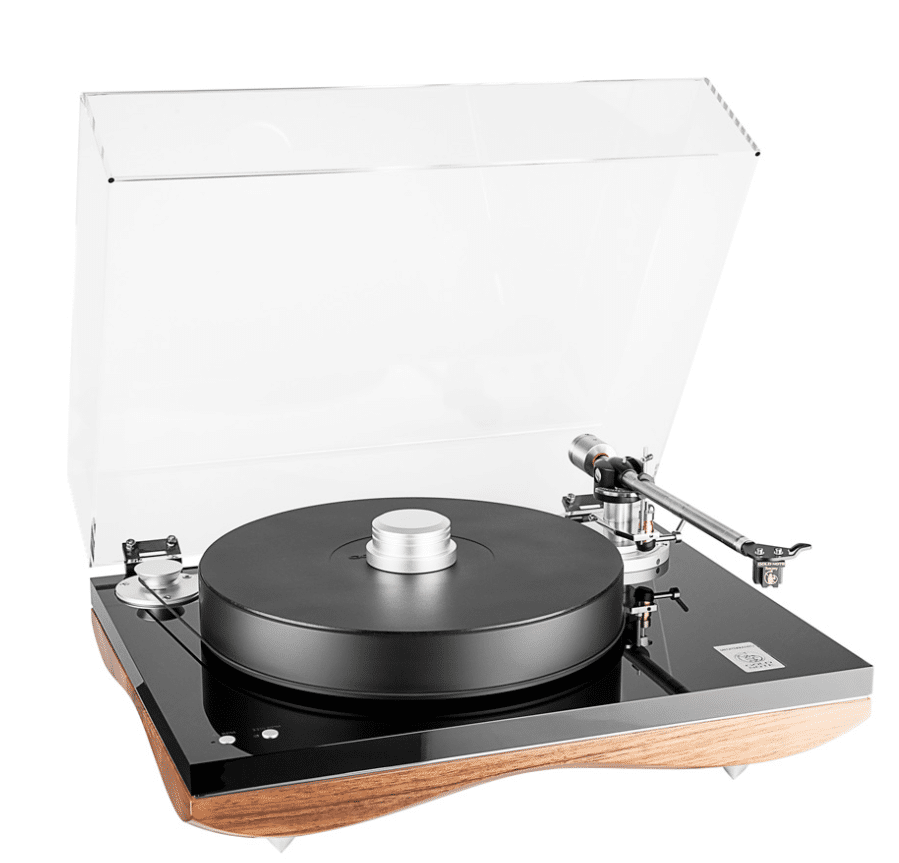
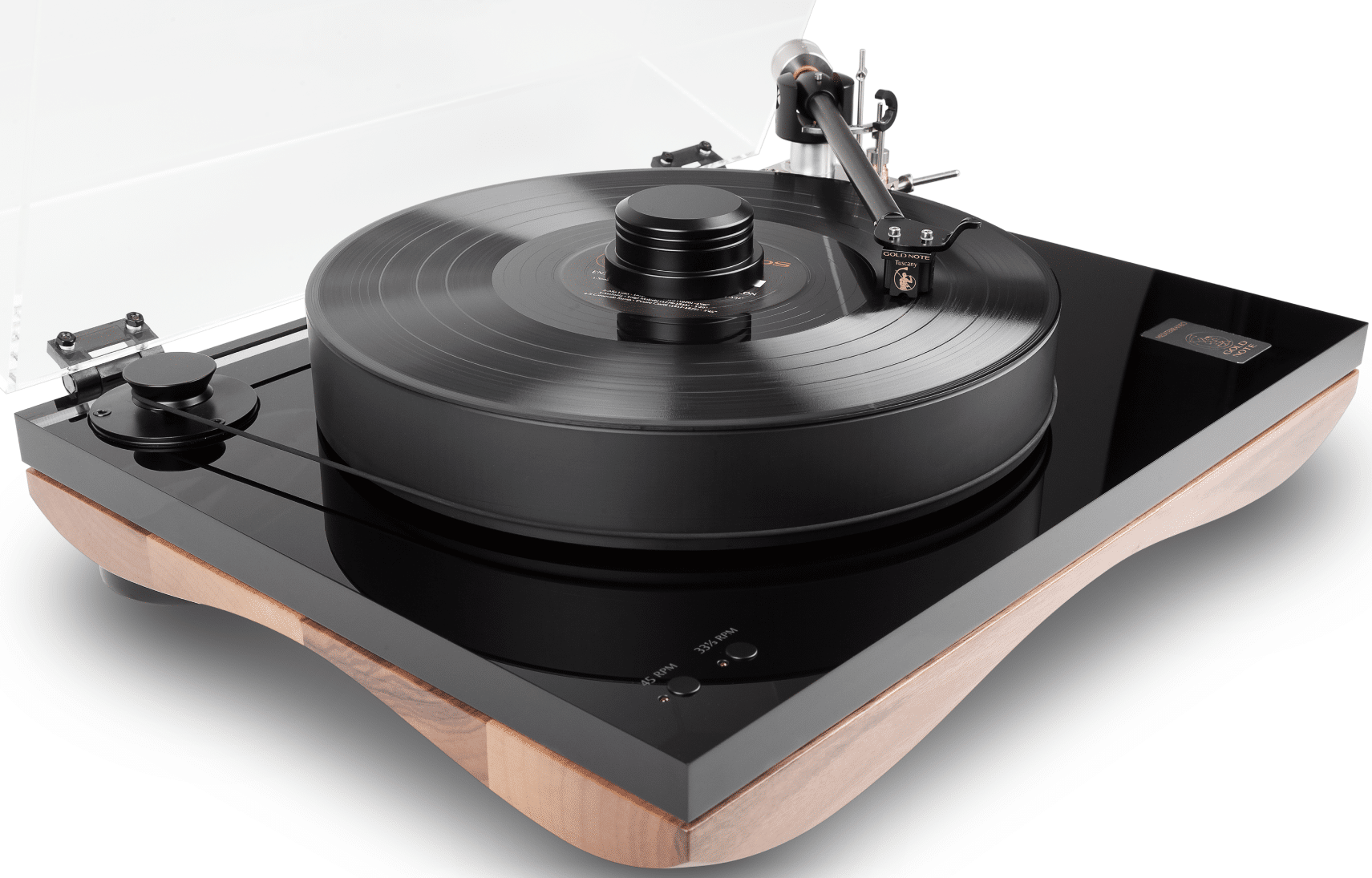
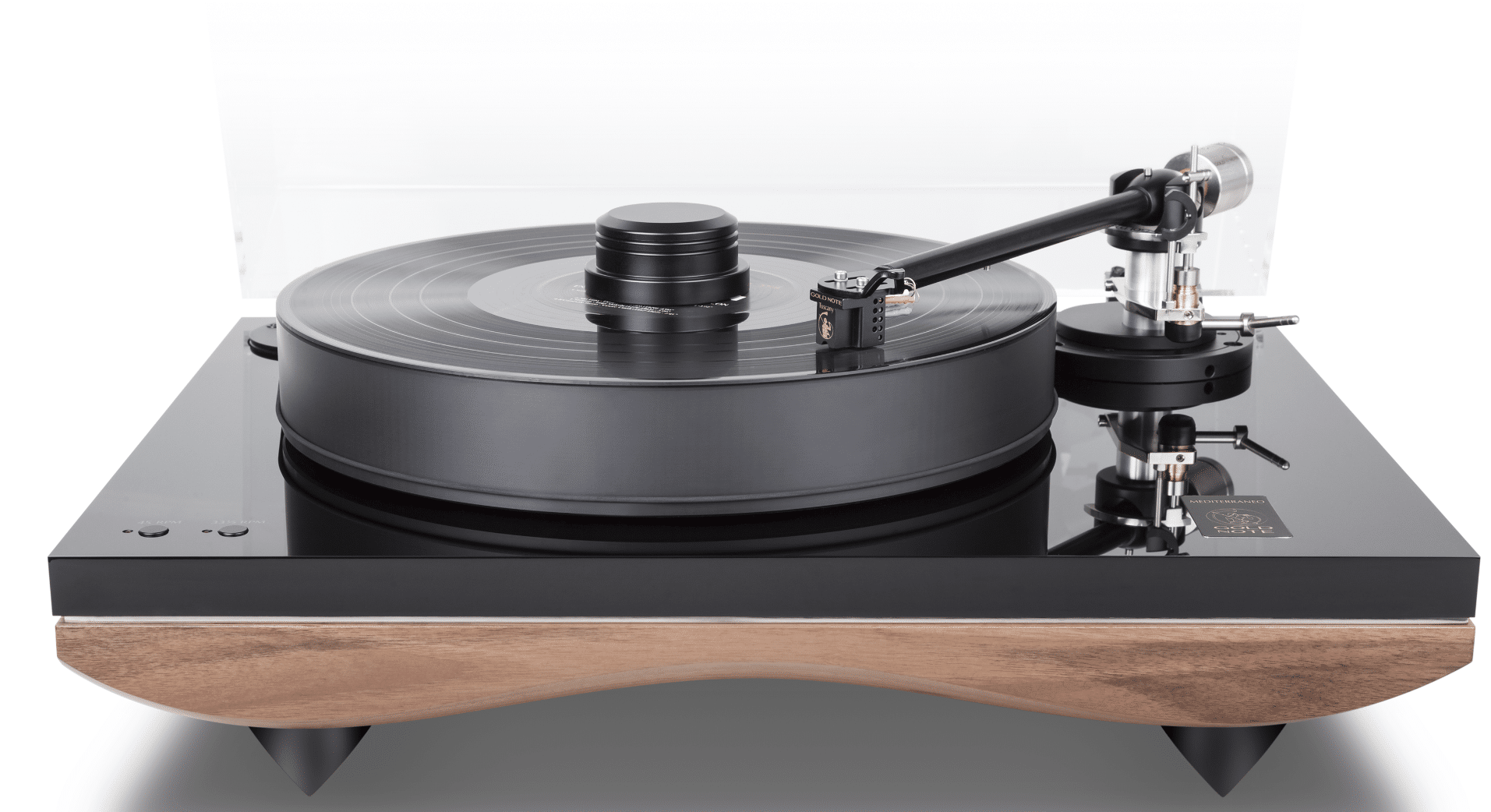
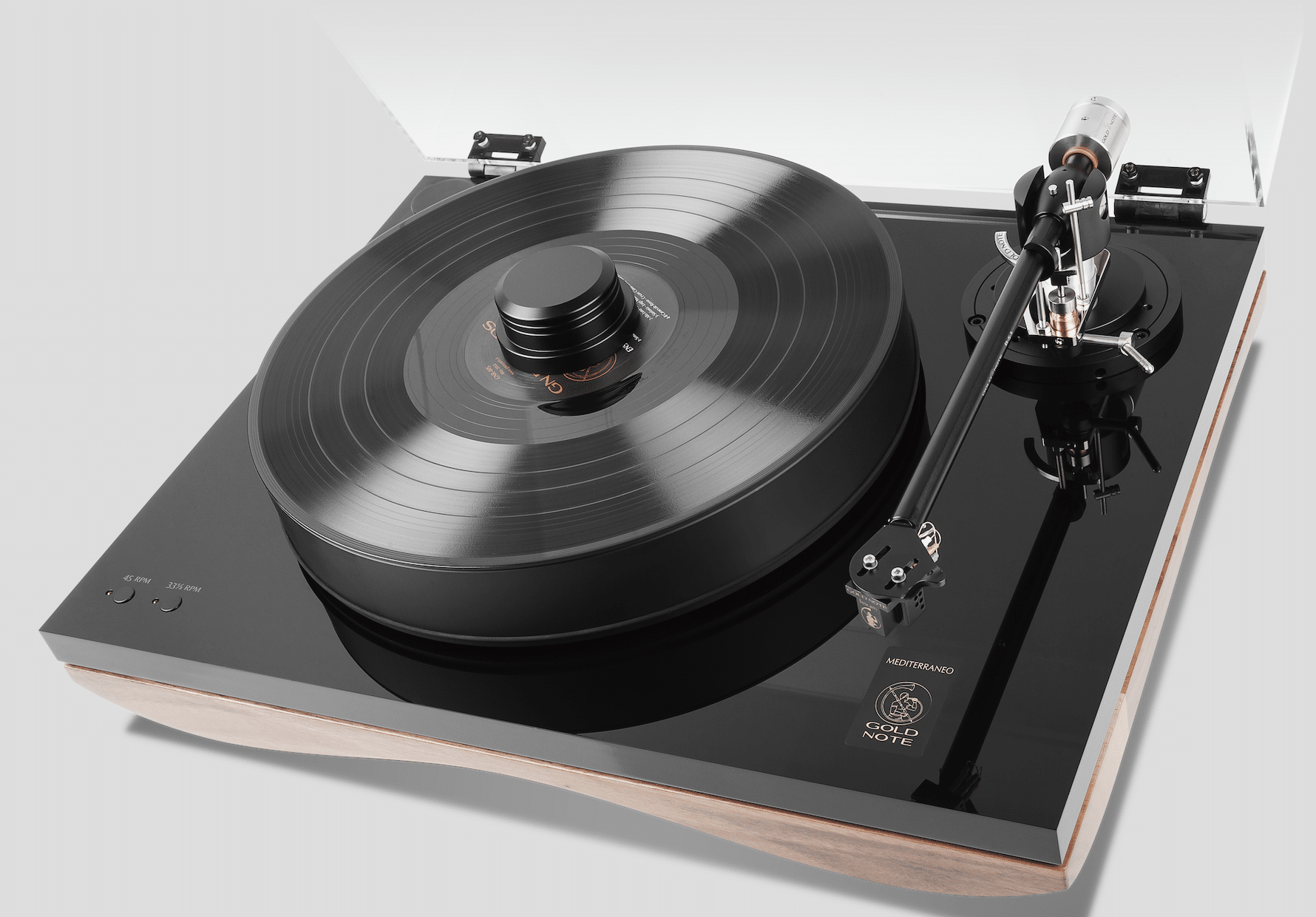


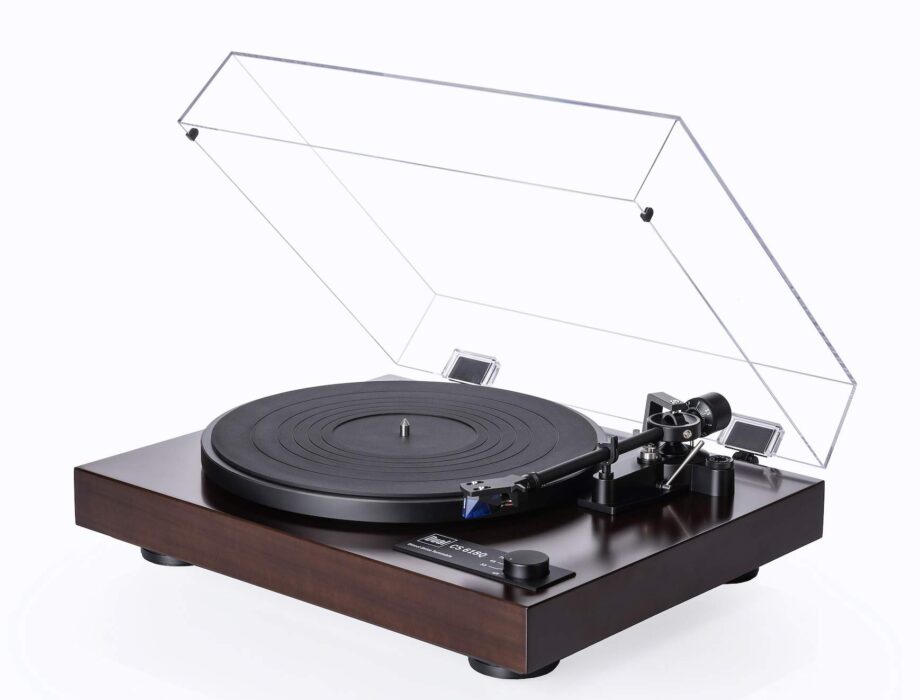
Hello Paul,
Great review. Beautiful turntable. I actually thought it would be more expensive.
Best regards
Geoff
Many thanks Geoffrey
Hi Paul: Impressive T/T. Nice review.
Low frequency resolution is paramount to premium/Hi-Rez. performance (sound).
It appears GN is well aware of this; you even gave (appropriately) extra ink in describing this combo’s excellent LF-Resolution.
Therefore, your following ‘listening impression’ comment came across awkwardly:
” …..The bass was shy on this track yet this low key frequency was tracked well by the turntable while the brass section was full of texture and detail.”
The wording suggests a “flaw” in table’s performance? I have great doubt that’s the case.
I believe it likely represents a very accurate rendition of the actual recording.
Readers should note your thoughts on turntable ‘record weights/stabilizer” for indeed this can have a dramatic impact on SQ; my past experience revealed the best sound sans (without) any such record “clamping” device.
Similarly, your comment on the ridiculous poorly designed tonearm ‘finger lift’ was most warranted -an inexcusable oversight.
This review was well done. Good job.
peter jasz
Hi Peter – my ineptitude, I’m afraid. My ‘shy bass’ comment referred to the shy bass guitar, not bass in general, sorry. I should have worded this bit correctly.
‘bass’ thing is now fixed, Peter.
Gold Note is making cheap tables and jacking up prices to appeal to audiophiles. The bearing, arm is good. But the overall build is cheap. The walnut is a nice touch on this model and yes, adds some cost but not like they are pretending. That wasn’t carved by a craftsman. A CNC machine and then cleaned up/finish sanded by hand. Thats the only way woodwork is done anywhere on the planet including china. At best a duplicarver but certainly not hand carved like they are pretending. Also, its made up of many pieces not a big slab so the walnut cost would not be high. The hype is a little much for me as is the price for a table that sounds dead. It looks pretty at least unlike the lessor line. When the speed switch buttons die how is it serviced?
Hi Tom, we are sorry if we communicated poorly how are turntables are made. In fact, they are not carved by hand but by machines which is necessary in order to create a perfect structure as calculated via computer making the plinths at the same time aesthetically pleasing and anti-resonant as calculated from the catenary curves. The realisation by machine is entrusted to a highly specialised supplier not comparable to a Chinese producer. The wood is cut with a saw, selected from big battens, stabilised in autoclave at a controlled temperature to eliminate eccessive humidity, then glued together by hand and pressed to obtain e perfect plinth, compact and stable.
Moreover, the finishing, sand-papering, lacquer and assembly are all executed by hand.
This means that the processing is not trivial or cheap at all and our turntables will last a long time.
I don’t know what the idea and comparison anyone has but certainly I do not see any turntable around in the market in the same price range made that way, do you?
We hope that these explanations will be well received.